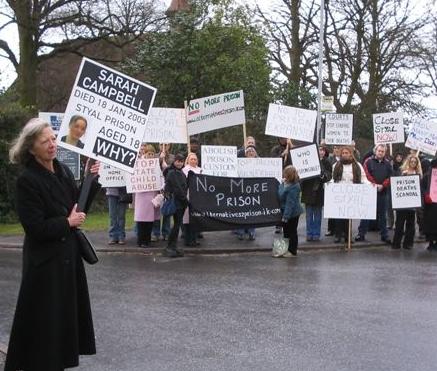
The little island of Lampedusa located between the Libyan and Italian coasts, actually closer to Libya than to Italy, has made the headlines again. Some call the island the Guantanamo of Europe. The island is the point of landing for many who either escape war zones or are simply pushed away as was the case for the many foreign workers from Africa or Asia in Libya. Lampedusa’s “reception” center or CPTA, centro di permanenza temporeana e assistenza, is full. It is a continuous theater of simple acts of dehumanization and intimidation.
Emotions are high after a video filmed by Ahmed, a Syrian refugee, with his cell phone and shown on channel 2 of Italian public television. The video shows people disrobing and standing naked in a cold wind before being spread with disinfectants said to contain a scabby outbreak.
Ahmed gave the video to a journalist adding: “We are treated like dogs… we were there naked in line, we were awaiting to be sprayed with disinfectant against scabby that we contracted in the center. It was like the Jews in the documentaries on Nazi concentration camps. The people in the center were staring at us, making fun of us to humiliate us…it was cold” and women were treated similarly.
These shocking images brought back memories of concentration camps and triggered public outrage as well as officials’ reactions. The mayor of the island compared the island to a “concentration camps,” although, a few years ago, another mayor of the same island showed no compassion for Tunisian refugees who were welcomed with slogans such as “Lampedusa does not want you, go away beasts”.
European Commissioner for Home Affairs Cecilia Malmström declared, “The images of Lampedusa’s center are appalling and unacceptable.” It is not the images that are unacceptable. It is the reality that these structures are there and badly run by a world of private associations and cooperatives that use public subsidies to create a very profitable business of locking up refugees.
“The more they are the better it is. The longer they stay the better it is and a minor refugee is a cherry on the cake,” wrote Alessandra Ziniti in La Repubblica.
With the free circulation of people and goods in Europe came the paradoxical concept of Fortress Europe. Actually the latter was formed as a business to serve the new globalized markets. It has left a trail of devastation and mistreatment of women, men and children. In Italy, during the Berlusconi years the business of dealing with refugees and migrants was given to the best financial offers. Even Catholic movements (comunione e liberazione) and entrepreneurial priests along with international energy corporations took part in it.
The money involved is colossal as Italy spends 1.8 million euros every day to detain 40 244 refugees.
Meanwhile the refugees and migrants whose futures were threatened in their home countries have been parked, sprayed and dispossessed of dignity and humanity in these centers. The latest scandal of Lampedusa is just the latest addition to the long list of State/EU mistreatment of people that accompanies austerity measures, as in Greece, that destabilize and impoverish civil society, creating the conditions for more dehumanization.
We need to imagine another type of solidarity to force the European Union to deliver the promises of its message as the one expressed by commissioner Malström after the drowning of 280 refugees off the shore of the island in October 2013: “This is not the European Union we want” it is certainly not the world society we want!
(Image Credit: Courrier International / Kountouris)

